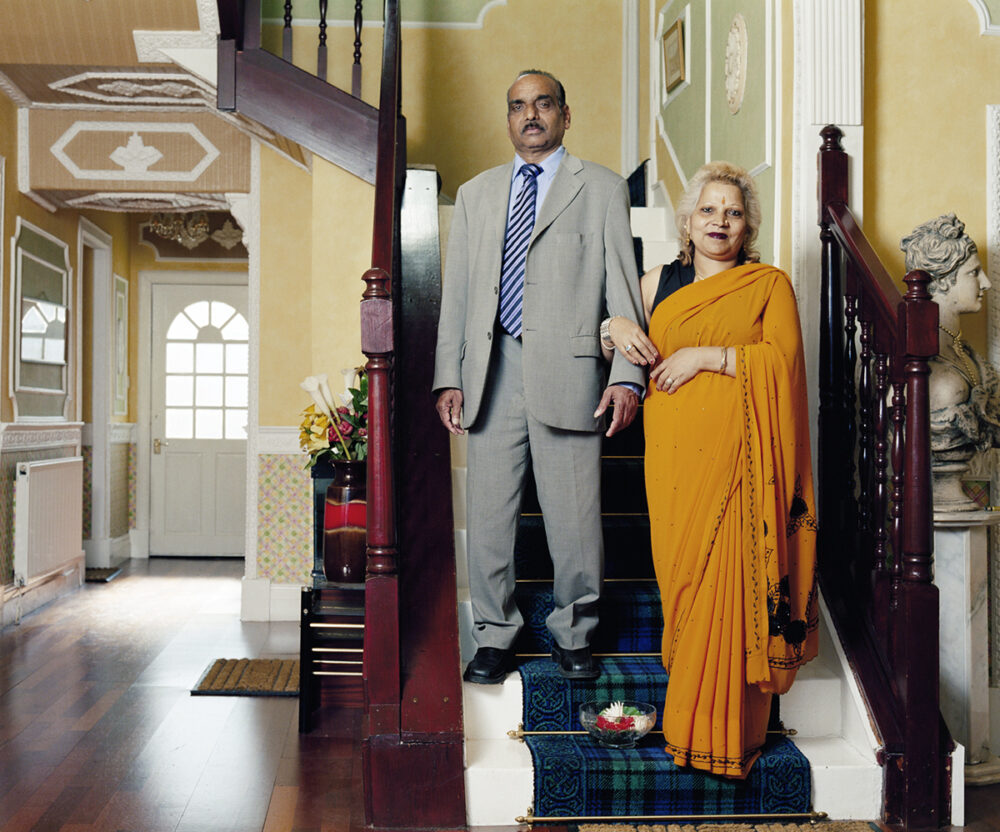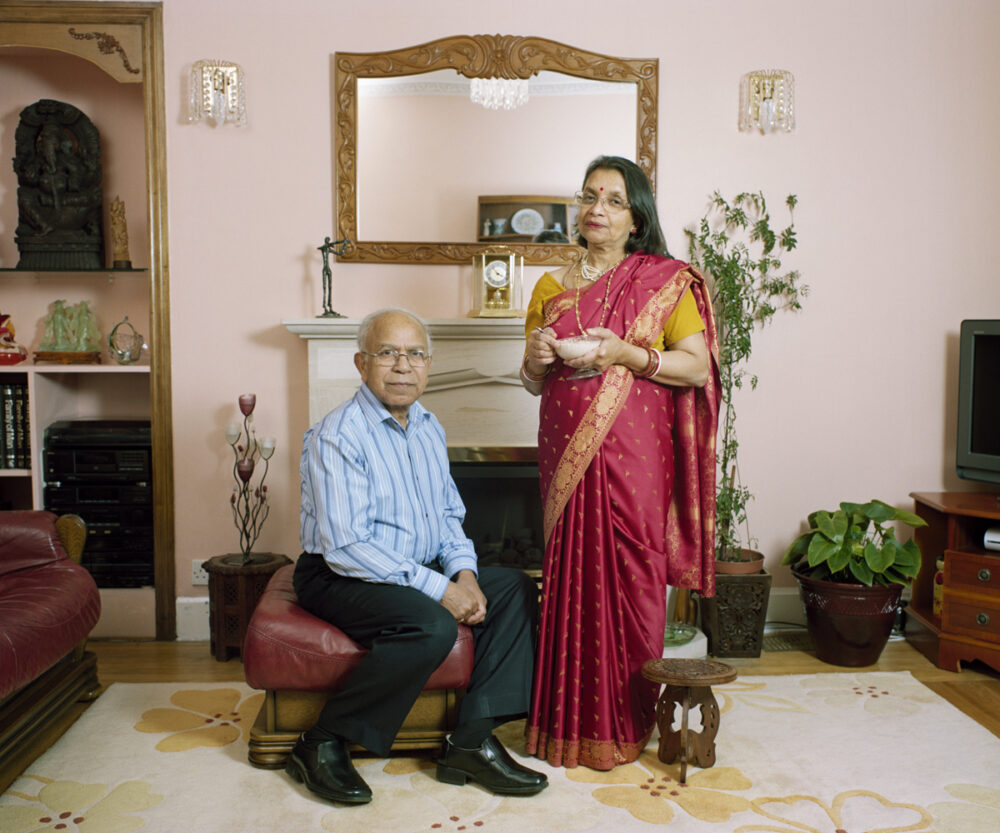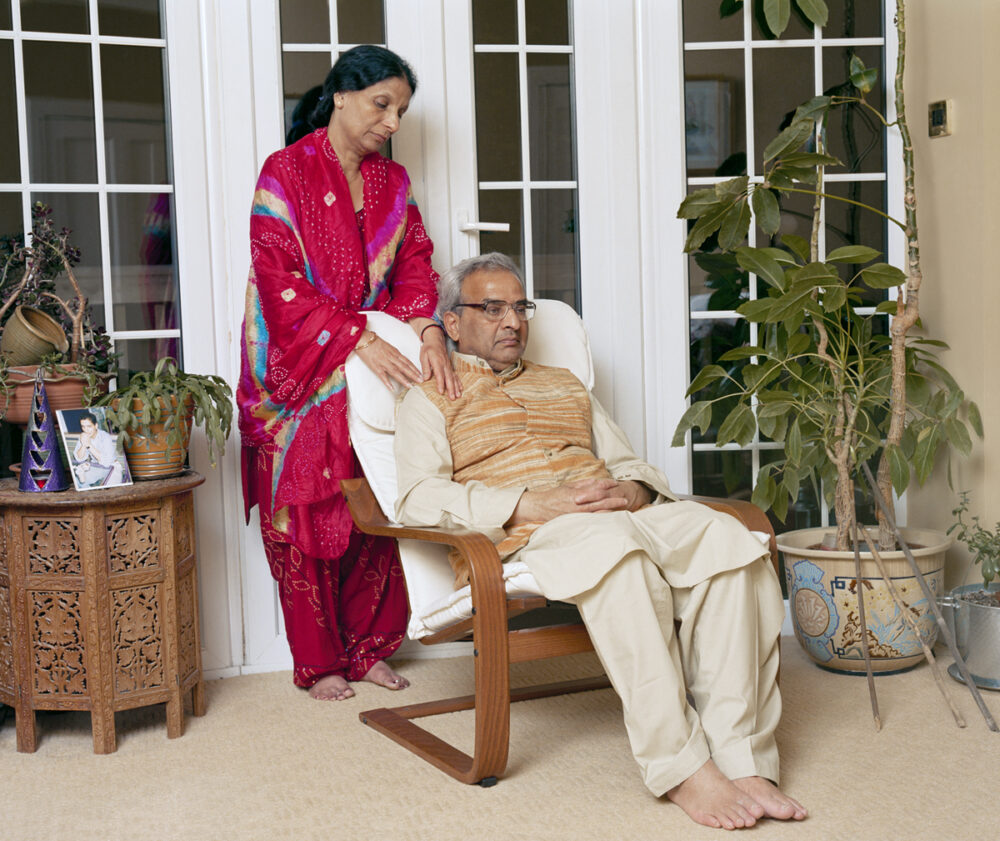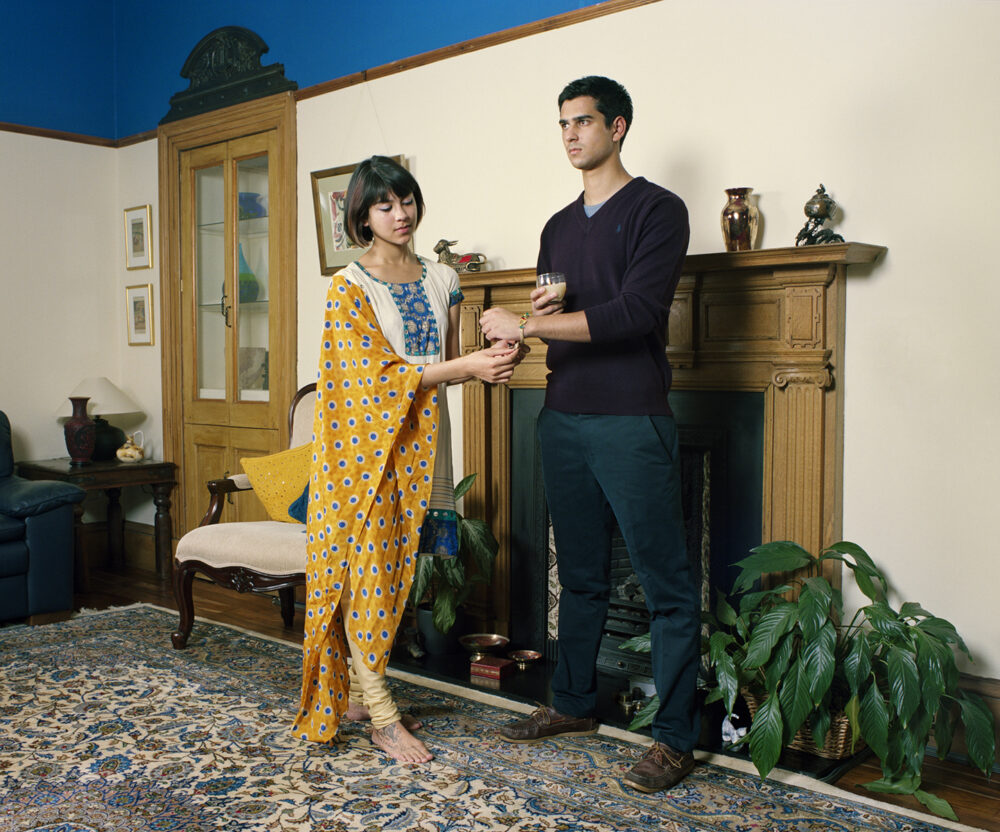
image © Arpita Shah 2011, all rights reserved
Sophie was recently invited to speak about Document Scotland as part of TalkSee Photography at Glasgow’s Centre for Contemporary Arts. It was a lively evening – a great turnout with a good debate afterwards and also it was the first time we met Arpita Shah – and saw her speak about her photography.
One of the projects Arpita presented was Ghar – which means Home in Hindi – an ongoing series of portraits that focuses around the lives of middle class Hindu families living in Scotland.
We immediately felt it was a project we wanted to feature on the blog – Arptita took some time to share some thoughts on her work and this project in particulate with us.
DS – Hi Arpita – can you talk to us a little about your motivations for starting this project and where it began.
AS – Ghar is an ongoing project and started back in 2006 during the final year of my post grad in Photography at Napier University. At the time I was writing a research paper on family photographs, in particular exploring my own family album. I became fascinated with childhood photographs of me and my brother dressed up as mythological Hindu characters or standing in front of very theatrical painted backdrops, which is quite common in the Indian family album. And so it was this concept of theatre and mythology and it’s relationship to Indian vernacular photography that visually inspired the work.
In terms of the motivation behind the project, ever since moving to Edinburgh I was really curious about the Hindu Community in Scotland, because I didn’t realise how large it was. With my interest in family photographs, I wanted to collaborate with Hindu families and make work, which explored the idea of home and identity. There was also this element of curiosity I had, having not grown up in Scotland, on what Hindu homes would be like, and if there would be any similarities or differences to my own childhood home which was scattered between India, Ireland, Saudi Arabia and England.
What I discovered was that, there was this strange familiarity in each home and in each family that reflected my own home, and even though I hadn’t met these families before there was just something intrinsically there that connected them to me.

image © Arpita Shah 2011, all rights reserved
DS – How did you meet and select your subjects?
AS – The Hindu community is quite tight knit, so at the start it was a little challenging especially because my family are not based in Scotland and so I was a complete stranger asking if I could come over to their homes and take portraits of their family.
So initially, I started off by contacting Hindu organisations such as the Mandir (Hindu temple) and meeting the community through events held there. Once I met my first family, they recommended me to another and it sort of continued that way. I always go visit the family first to get to know them between and once I learn more about them, it inspires the portrait and mythological characters they take on in their staged portraits.
DS – We at Document Scotland are fascinated by the way this project documents the homes of the people you photographed. Other projects you’ve made feature anonymous coloured backdrops, what made you want to photograph these subjects in their homes and can you talk a little about the importance that that plays in the images.
The home plays a very important role in Ghar, because it’s the interiors that initially transported me back to my memories of my own family home. The homes, I entered were so familiar, they were full of elements that reminded me an aunt’s house in India, or my childhood home in Saudi or England. And the families I met somehow reflected similarities to my own family, so the work is all about how these homes can be located anywhere in the world but when you enter one, there’s something universal and familiar about them which makes them a Hindu home and a Hindu family.
In terms of the staged aspect in the portraits, the home acts as an ideal backdrop for the themes explored in the work. After meeting each family, I selected Hindu mythological characters for them to take on in their portraits. Each family restaged a story that somehow reflected and revealed something unique and important about them and their family values. So having the portraits taken in the home is also really symbolic, because it’s all about retelling ancient Indian stories and placing them in a domestic setting, and so in a way bringing these cultural myths’ to life and showing how they still continue to have cultural relevance to contemporary Indians.

image © Arpita Shah 2011, all rights reserved
DS – How does this project fit within your practise in general?
AS – As an India-born artist, my work is fascinated with exploring themes around identity home and diaspora. I grew up between India, Saudi Arabia, Ireland the UK and so my work tends to focus around exploring the experience of shifting cultural identities. I am always meeting individuals in Scotland that share similar narratives to me, and the photographic work I make is all about collaborating with them, and sharing and celebrating their journeys, their histories and identities. I tend to reference cultural mythology a lot in my images, and Ghar is one of my earlier bodies of work where this interest began.

image © Arpita Shah 2010, all rights reserved
DS – With your continuation of the work are you looking for more subjects?
AS – Yes, I would be keen to collaborate with the Indian community in the Highlands. I think it would be great to represent a variety of Hindu families from all over Scotland.
DS – What do the subjects think of the work?
AS – As the work is ongoing, only a small preview of the work has been exhibited. The subjects have been really positive about the work, and I think when they see the portraits together – it really enhances their understanding of what the project is all about. Because there is such a large Asian community in Scotland, it can be hard to distinguish the various communities within it, so the Hindu community have been really excited about the project, as there hasn’t been specific work that has documented that particular community.

image © Arpita Shah 2011, all rights reserved
DS – Where is the project heading and any thoughts on its conclusion/display/exhibition /publication etc ?
AS – I would like to continue photographing Scottish Hindu families, and would also like to expand the series to documenting families in England and Northern Ireland. I envision the final work to be a touring exhibition as well as a publication documenting different generation Hindu families who have settled in UK. I think in the future, a book would great, because it would retell ancient Hindu stories through the experiences of contemporary Asian families living in UK.
Thanks Arpita –
To see more of Arpita’s work take a look at her website here www.arpitashah.com

